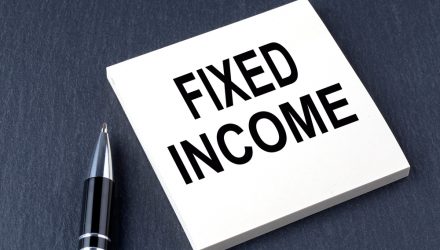In a vacuum of constant rate hikes, passive short-term bond funds would be a perpetual go-to for fixed income investors. However, more investors are opting for market flexibility with active funds, as inflows are outshining their more passive peers in the current market environment.
Much of 2024 marked that need for flexibility, as capital markets were optimistic that rate cuts would happen as soon as the first quarter. Now that the second quarter is past its midpoint, the higher-for-longer interest rates narrative is bringing the need for bond market pliability into the forefront.
When the Federal Reserve was aggressively hiking interest rates, short-term bonds were one of the prime options to help mitigate rate risk. A Vanguard perspective underscored the changing needs of the investor. And seeing that rate cuts may not happen sooner than expected, it appears fixed income investors are getting active.
Bonds with shorter maturity dates are still within focus, but the active component is the key differentiator. With these funds offering competitive expense ratios versus their passive counterparts, it’s difficult for investors to pass up on. The inflows highlight that.
“If one changing aspect of the expanding ETF industry is worth teasing out, it’s the ongoing emergence of actively managed ETFs, notably the intermediate (for example, core and core-plus) and ultra-short categories,” the aforementioned Vanguard perspective noted, showing that passive ultra-short bond ETFs have seen outflows thus far in 2024 — a key discernment from 2023’s dominance.
Active vs. Passive Ultra-Short-Term Bond ETF Inflows Since Q4 2023 ($B)

Sources: Vanguard, based on data from Morningstar, Inc., as of March 31, 2024
2 Active and Cost-Effective Options
As mentioned, one of the reasons underscoring the rise of active ETFs is their competitive expense ratios. The Vanguard Core Bond ETF (VCRB) and the Vanguard Core-Plus Bond ETF (VPLS), with their 0.10% and 20% expense ratios, respectively, demonstrate this cost-effectiveness.
VCRB provides diversified exposure to mostly the U.S. investment-grade bond market. In addition to staying within the safe confines of U.S. Treasuries, the fund extends its exposure to other fixed income assets for diversification, including mortgage-backed securities and corporate securities.
With a 30-day SEC yield of 5.09% (as of May 24), investors who want to turn up the risk dial for more income can do so, but still maintain investment-grade quality. VPLS adds selective exposure to riskier credit profiles such as emerging market debt, but that risk is tempered by flexibility of the fund’s active management.
With both funds, investors are able to harness the deep well of talent from the Vanguard Fixed Income Group at a low cost. Irrespective of whether rate cuts happen soon, maintaining the market flexibility should provide these active Vanguard funds with a sustained competitive advantage as part of an investor’s fixed income portfolio.
For more news, information, and analysis, visit the Fixed Income Channel.

